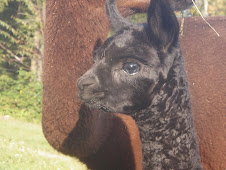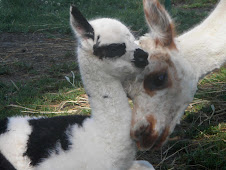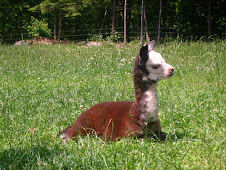 First and foremost, breeding stock should be selected by focusing on health traits. Sires and dams should have a genetic and individual history of a highly productive life, low parasite loads, minor or no heath issues, high breed-back ability, and solid conformation. Second, breeding stock is selected based on fiber traits of staple length, low micron and density. But they are not the ultimate decision makers. The longevity and health traits are much more important to the long term success of fiber producing animals and their farmers.
First and foremost, breeding stock should be selected by focusing on health traits. Sires and dams should have a genetic and individual history of a highly productive life, low parasite loads, minor or no heath issues, high breed-back ability, and solid conformation. Second, breeding stock is selected based on fiber traits of staple length, low micron and density. But they are not the ultimate decision makers. The longevity and health traits are much more important to the long term success of fiber producing animals and their farmers.The pasture, hay and soil, and in some cases, grain, set a solid base for producing high-quality fiber. Supplying the alpaca with the best possible feed is the farm's goal. To maintain a healthy alpaca, free-choice minerals must always be available and preferably in separate dishes so the animal can choose what it needs specifically.
The other factor to producing high-quality, usable fiber is proper care of the fiber before harvesting. Keep hay manger and pastures free of noxious weeds that contaminate the fiber. Keep barn and yard clean of all hay or other debris that could contaminate the fiber prior to shearing. Keep animals dry prior to shearing. Hire a quality shearer to harvest the fiber properly. Store you fiber in a dry location. Skirt your fiber rigorously. Finally, choose your mill carefully.
Quality fiber pays well. A solid, well-executed plan for breeding stock selection, feed and harvesting of the fiber is worth it.
Here is what they say about the fiber at Stepping Stone Farm Alpacas:
"I am enjoying working with your fiber. It is so-o-o nice! Thanks for your business."
Nancy • NEWAIM Fiber Mill • Waldoboro, Maine
" I have been unable to find yarn as nice as yours. I will just have to wait the six months until yours is milled."
Feng • Washington, DC








